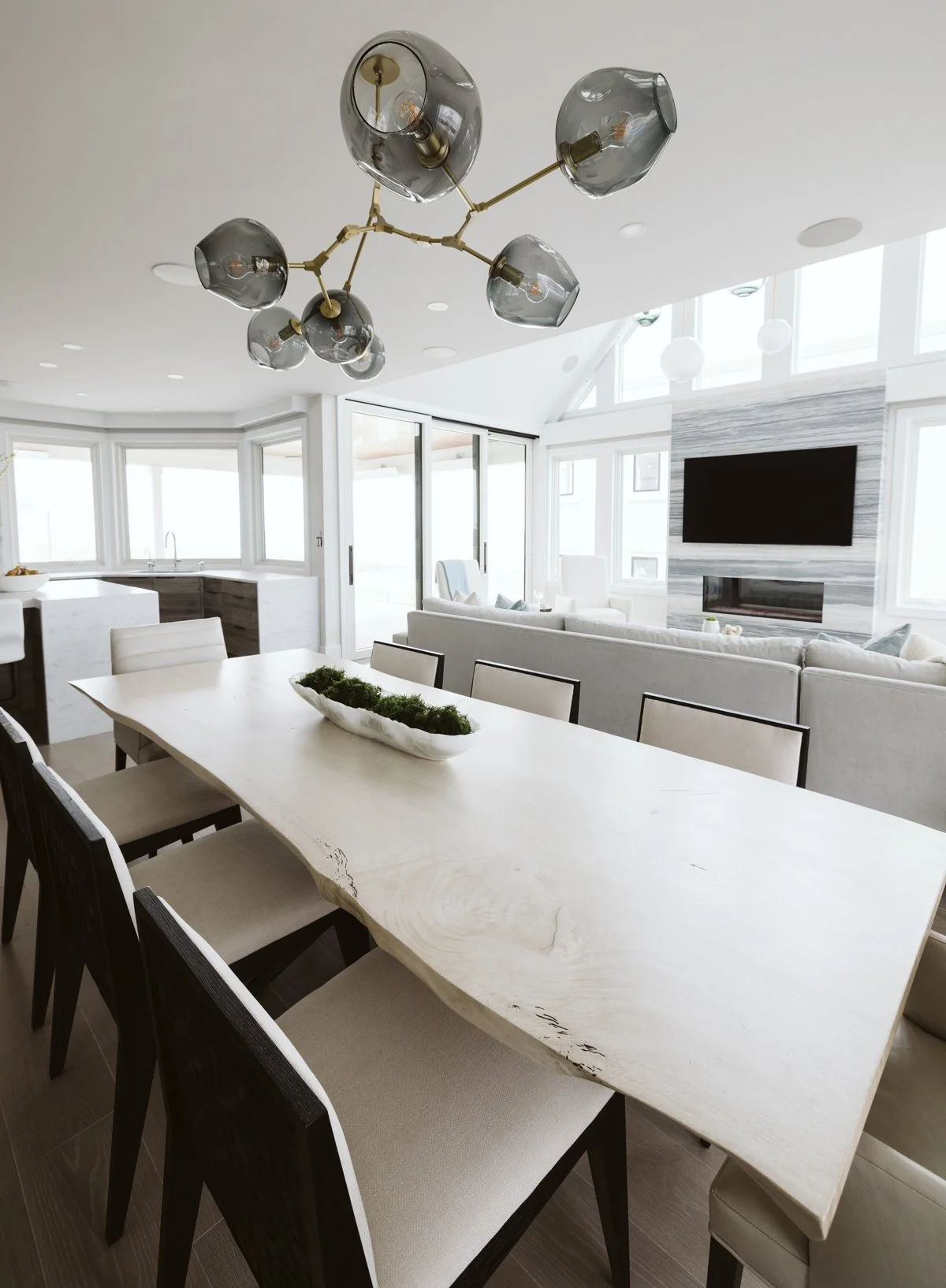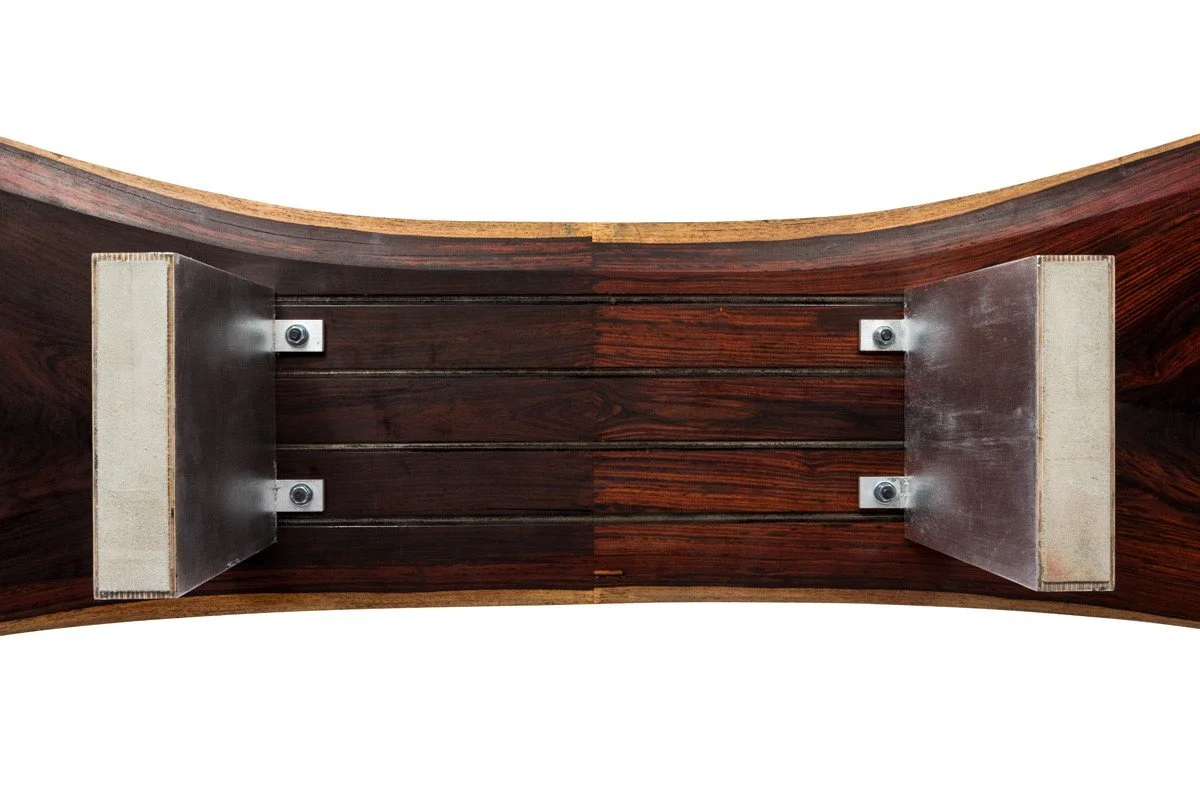Peeling Back the Layers: Live Edge Furniture
Article Contributor: Ian J. Kirby
Author, Furniture Designer and Maker
It’s not uncommon that the same word is pronounced differently in these United States than in England. It’s not uncommon that the same object has a different name in the United States than it has in England. One such example is the expression “live edge.” It refers to a board of wood or a plank that has the bark of the tree on one or both edges. Even if the bark is gone but the natural edge remains, it’s called a “live edge.” The same edge in England is called a “waney edge.” You could get your second PhD by doing the etymological research that would explain why these names are different. I’m going to give my explanation and its conjecture. A kinder way would be to say it’s an educated guess.
To clear the air, there are two words which sound the same but are spelled differently and they have different meanings. Wane and Wain. Wane is a decrease in size or diminishing, as in “the moon is waning.” The opposite of a waxing moon! A wain is a farm wagon.
In the days before tractors, coach builders specialized in building different wheeled vehicles which had different purposes. A landau, a brougham, a gig, a stagecoach, and so on. A typical all purpose farm cart which might one day carry hay and the next potatoes or turnips, or a load of manure was called a wain. The specialist builder of such wagons was a wainwright. Now it would be a Ford, Chevy, or a Mack truck. Such a wagon does not require the niceties of a vehicle made to carry people. The bed and the sides had to be sturdy more than fancy. Straightening the natural edges of these boards simply made the wagon more expensive but no more efficient. The wainwright used boards as they were cut from the log, they had a “waney edge.”
The expression “live edge” is equally shrouded but in a different way. There is nothing “live” about it when you see it but it was live when the tree was standing because right under the bark is the cambium layer, the only part of the tree where growth takes place. The bark of the tree has two layers. The outer, protective layer, and a much thinner inner layer called the phloem. The phloem carries the nutrients made in the leaves throughout the tree to the cambium layer which is a layer of living cells which produce the wood. The cells grow as a result of the nutrients from the phloem. They grow and divide into two cells. One becomes wood and the other stays in the cambium and repeats the process.
If you could strip the bark, which is not easy, the cambium layer is a thin, moist, somewhat slimy layer which you would need a microscope or slides to make any sense of. Wood and bark are made right there. When the tree is cut down, the cambium quickly dries and dissipates. I imagine someone in the past knew enough to know that a board with the bark left on it was once the living or “live edge.”
Live edge boards are cut to two inches thick or better. Rare and straight grain pieces are cut this way to begin the drying process. They are cut to thinner material later – or not. Gnarled, twisted, knotty trunks with fissures, fungus, and dead parts in them are cut thick so that they will stay together when they dry.
The table in this photograph is a piece I made from a small slab of rosewood that my friend Ellis had been carting around for about forty years. He was moving house and workshop, everything had to go. Like all furniture makers he had a stash of boards and chunks of “special wood.”
The intent is that at some time in the future they will be used to make something special. Like someday, the future never comes and the pile gets bigger. This piece was the crotch of a tree, the place where the trunk divided into two branches. It was about thirty-six inches long and about three and a half inches thick. It was sawn through its thickness to make two boards which were then joined end to end.
The colors of the grain and the elegant shape of the joined pieces pointed the way to the treatment of edges and the base. The edges are chamfered to leave a three-eighths of an inch flat and the base is two simple blocks which, along with the edges are finished with silver leaf.
In crafting live edge furniture, we uncover not just the beauty in the finished pieces but also the intricate stories hidden within the wood itself. As we unraveled the distinctions between "live edge" and its English counterpart, "waney edge," we embarked on a journey through the rich history of woodworking, finding beauty in the revelation of the cambium layer beneath the bark. In the world of live edge furniture, each piece becomes a chapter, connecting the past with the present, and inviting us to appreciate not just the craftsmanship but the enduring stories encapsulated in every grain and curve. Visit Surroundings Interiors to explore the artistry of our live edge collection.
Surroundings Interiors is a New Jersey-based interior design and furniture destination serving Southern, NJ, and Philadelphia with a presence along the entire East Coast including Maine and Florida. At our core, our specialty is taking your vision and turning your house into your dream home. Visit our design showroom and explore all the possibilities 250 Tilton Road, Northfield, NJ. If you’d like to make an appointment with one of our interior designers, call 609-407-5002.




